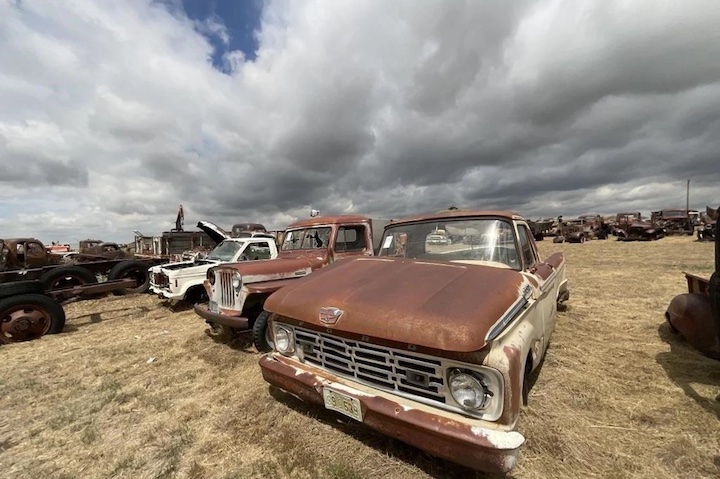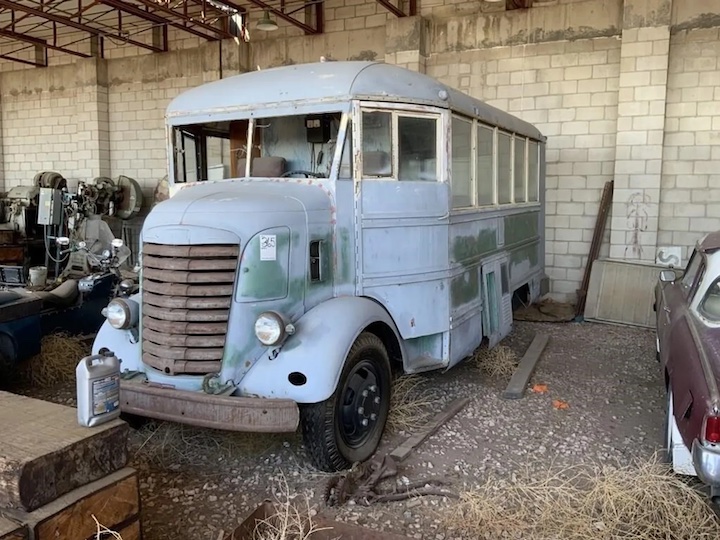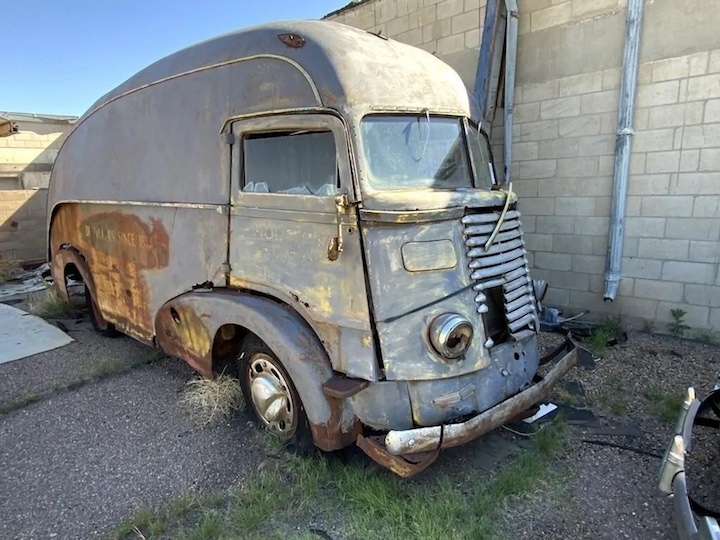More then 950 old trucks at auction and more than 950 stories

Photos courtesy of Kraupie's Auctioneers
(October 6, 2022) Rob van Vleet has so many old cars and trucks — mostly trucks — scattered across the grasslands of western Nebraska that he has entirely forgotten about some in particular and has lost track of precisely how many he currently owns. Somewhere between 1,500 and 1,800, he figures.
On the other hand, he can still rattle off the names of the previous owners of some of those vehicles as if he talked to them yesterday, recalling exactly where they lived, the conversations they had, and how that previous owner employed that truck to make a living, whether it be hauling watermelons from Florida to Toronto, shipping produce from western Colorado over the mountains to Denver, or shooting blue flames out their exhaust stacks running propane through Hall-Scott engines.
"Whenever I see an old truck, I like to know what the old guy did with it," he says.
And, as the size of his collection attests, he usually succeeds in purchasing the old truck and bringing it home with him. But now, he's realized it's time to disperse most of those trucks and their stories via what Kraupie's Auctioneers has called the Nebraska Truck Hoard Auction, an online sale of more than 950 vehicles.
How the Hoard came to be
It's not the first time he's amassed a sizable collection of old cars and trucks. By trade, van Vleet hauls heavy and oversize scrap around the Midwest and Rocky Mountain regions, so he's often coming across older cars and trucks out sitting in fields or parked in back forties. "Out here in Nebraska, there's no trees, so you can see those trucks way off in the distance, and a few hours later, you'll finally reach them," he says. "Out here, we have nice old stuff—not fancy, but good."
He started knocking on doors to see if he could buy the older vehicles, partly because they interested him, and partly because he could always fire up his scrap-processing machinery to liquidate the old vehicles if necessary. "My formula when I was going around is that I'd buy them for $75, knowing they were worth $650 for scrap," he says. "It was really a rationalization to buy more old trucks."
More often than not, he'd simply hang on to the vehicles. He had the wide open spaces, and the climate in his corner of Nebraska does a good job of preserving anything left outside. By the late 1990s, his collection topped 600 old trucks, but then he had to sell them all at auction to satisfy a bank loan. "A lot of good stuff went to new homes," he says. "And a lot of good stuff got away." Rather than sulk about it and regret selling that collection, however, van Vleet did what he does best: He started scouring the countryside every weekend to once again build up a fleet of derelicts.
He insists that he doesn't run a junkyard, just a stash, so pretty much everything he buys remains in the same state as when he hauled it to where it now sits. By his estimation, most of what he has could be made to run after a day or two of wrenching. He, however, has never made the time to do so, and he's coming to realize that he probably never will with such a sizable collection, so he's made the decision to sell it all off again. "I like them, but I go out and look around and wonder what the hell I'm doing," he says. "There just comes a time when you've got to move on."

1939 GMC "movie bus"
Of the trucks he's putting up for auction, he considers the 1939 GMC "movie bus" one of the standouts. As the story about it goes, Howard Hughes had eight such buses custom built to use as dressing rooms on Hollywood film sets, and the one in van Vleet's stash, which came out of Oakland, California, more than 10 years ago, reportedly served as Jane Russell's personal dressing room during filming of "The Outlaw." At least twoother so-called Howard Hughes buses still exist, including the one that spent some time in the Lost Highway Museum in Pomeroy, Washington, though any direct evidence of the provenance of van Vleet's example remains thin. It does still have a full period interior including desk, shower, and radio, though it could stand a full restoration.

Seagram's Diamond T
Another standout, the Seagram's Diamond T, has a less ambiguous history. During the Thirties, Canada banned print advertisements for beer brewers and, apparently, distillers as well. To get around the ban, brewers turned to coachbuilders to construct elaborate and highly designed fleets of delivery trucks. Canadian distiller Seagram's did so as well, turning to Toronto-based Smith Brothers Body Works to have at least one streamlined steel-bodied delivery van and mobile billboard built on a 1938 Diamond T chassis.
Seagram's used it until 1949, then sold it to an Ontario-based construction company that used it for a few more decades before selling it to a scrap dealer. It eventually made its way in dilapidated condition to a restoration shop also in Ontario before van Vleet heard of its existence and traveled north of the border to retrieve it.
"That needs to go back together," he says. "It needs somebody to step up and spend $350,000 to restore it. They can have it for free if they want, I just want to see it done."
